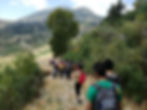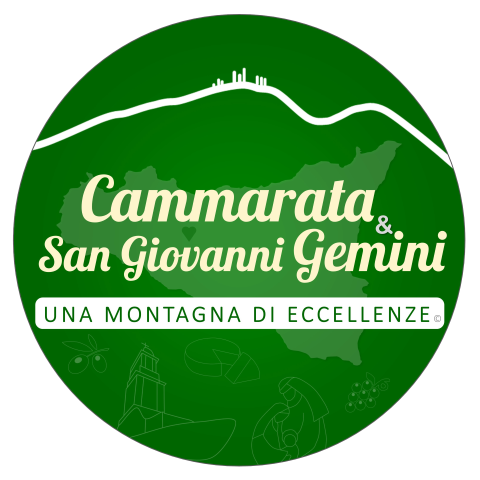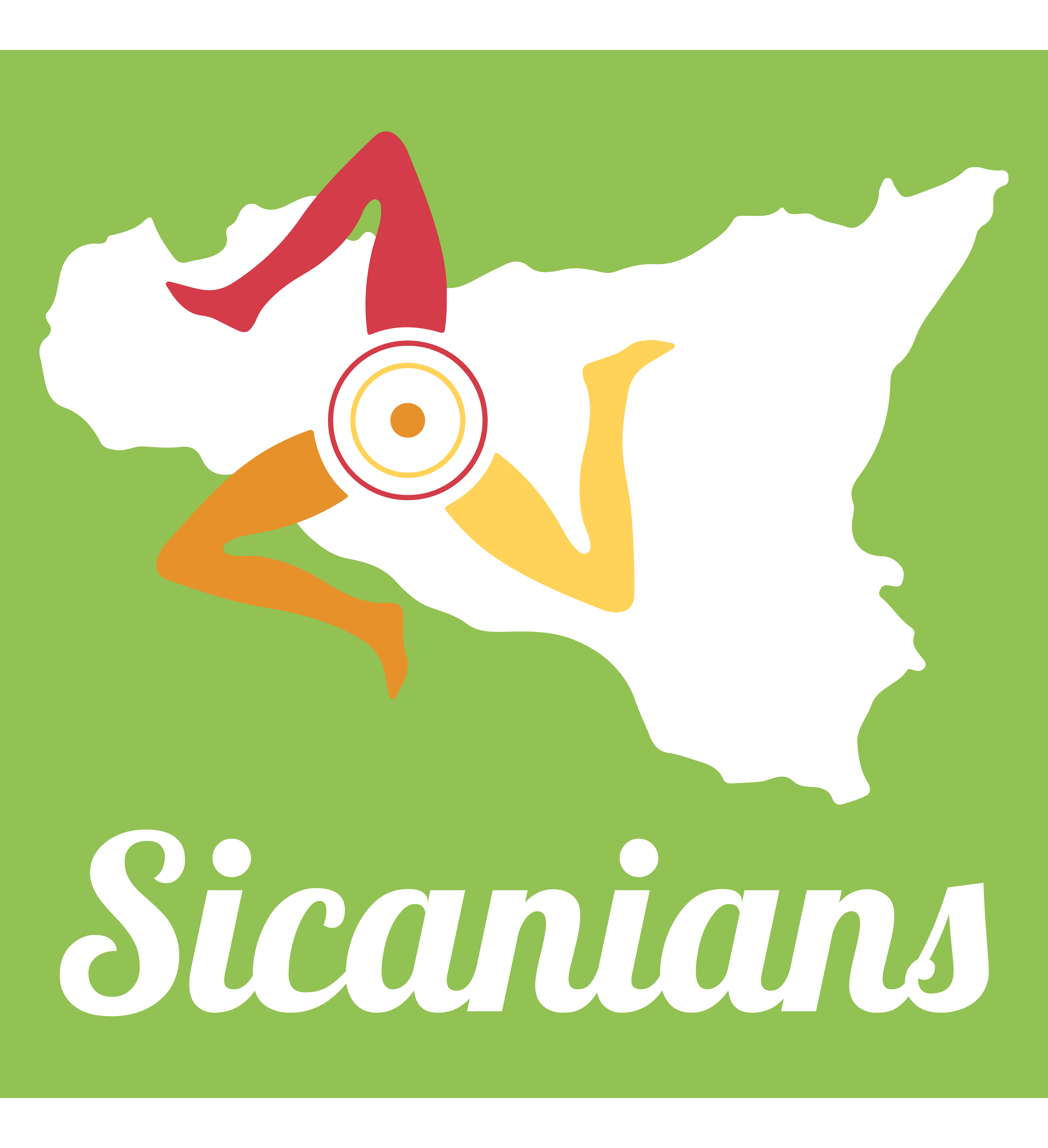
Savochello equipped area
The equipped area of Savochello-Monte Cammarata is located in a beautiful pine forest with a recreational area for children, which can accommodate up to 300 visitors. To reach it you have to follow the road that from Santo Stefano di Quisquina leads to Cammarata. Once you reach the forest state property called Ledera, indicated by specific signs, you have to take the only road that leads to the top of the mountain. The area is also equipped with toilets, cooking points, cycle paths and nature trails.

Nature
A territory to be discovered


-
Cammarata: It is located in the province of Agrigento and is characterized by Mount Cammarata (1578 m), the second highest of the Sicani Mountains after Rocca Busambra. This mountain is a limestone relief dating back to the Mesozoic era.
-
San Giovanni Gemini: This location is also located in the province of Agrigento. It is characterized by a predominantly mountainous landscape, with limestone reliefs from the Mesozoic era.
-
Santo Stefano Quisquina: This town, also located in the province of Agrigento, hosts among its reliefs Monte Gemini (1397 m), another limestone formation from the Mesozoic era.
-
Serra Quisquina (1059 m): A limestone relief from the Mesozoic era located in the province of Agrigento, it is part of the Sicani Mountains area.
-
Serra della Moneta (1188 m): This relief is another example of a limestone formation dating back to the Mesozoic era, found in the same region.
-
Pizzo della Rondine (1246 m): Located in the province of Agrigento, it is another limestone relief from the Mesozoic era that is part of the Sicani Mountains.
The territory and the history of the Sicani mountains
Originating from tectonic dynamics interacting with Earth's plates, continents began to take shape in the Mesozoic Era, a period that began 245 million years ago and ended 68 million years ago. Over a period of 167 million years, the continents evolved to shapes similar to their current ones.
During the Mesozoic, an era characterized by a hot and humid climate, we witnessed the spread of terrestrial, aquatic and flying reptiles, omnivores, carnivores and herbivores, which populated the lush primordial forests. Climate variations transformed these forests into carbon deposits, catalyzing the evolution of richer and more varied species. Conifers were the first to appear, followed by myriad other plants. Only towards the end of the Era did vegetation begin to resemble what we know today.
With the evolution of the climate, the large reptiles disappeared, making room for birds and mammals, more adaptable to the new climate. Among invertebrates, ammonites became predominant, and are today considered key fossils of the Secondary Era. Our mountains, once submerged in the Mediterranean, emerged in the Mesozoic, due to the retreat of the water due to high temperatures.
Monte Cammarata is a clear example of this geological transformation, with its diversity of "lithological types": argillites and calcarenites, limestones and grenadines, typical of the Mesozoic. Its rock stratifications include greenish and blackish clay formations, with calcite veins, and layers with limestone and grenadine formations with calcarenite drips, which constitute the backbone of the mountain. Among the fossils found, there are halobia, daonelle (headless molluscs with a visceral sac enclosed in the shell, ancestors of modern limpets) and poseidonia (algae).
Similarly, fossils have been found in the Sicani Mountains and in the Madonie, in particular in Cammarata, San Giovanni Gemini and Santo Stefano Quisquina (province of Agrigento), regions characterized by limestone reliefs dating back to the Mesozoic era.







Mount Cammarata
Rising at an altitude of almost 1600 meters above sea level, Monte Cammarata represents a fundamental element in the orography of the Sicani region in Sicily. The panoramic view from its peak extends to infinity, offering a breathtaking sight of the entire island. Immersed in luxuriant forests, the two equipped areas of the mountain are an ideal refuge for relaxing and resting after an excursion.
Composed mainly of limestone rocks, Monte Cammarata is characterized by an extraordinary chromatic variety of its marbles. The shades range from ash-white cream to ivory grey, with delicate shades of blue. The top of the mountain is inhabited by over 150 herbaceous plant species, many of which are rare endemics. Over time, thanks to a slow and constant erosion process, the entire mountain range has shaped itself into a series of peaks, gorges and vertical walls, creating scenarios of extraordinary beauty that leave you breathless.

Ancient paths and paths
There is still an ancient path that winds from Santa Lucia to Contrada Caddeddi, the first refuge along the way. This path, interrupted only by the road, then continues up to the top of Monte Cammarata. An ancient mule track starts instead from the second refuge and crosses the Contrada Ledera, going up to the suggestive "nivera del baglio". This mule track was used in the 1950s and 1960s to transport the ice used for slushes to all the towns in the province.
A dirt road branches off from the area of the Strait of Vacca, right at the height of the current provincial swimming pool. It enters the wood of Sant'Onofrio, where the small church dedicated to him is located and in front of the mysterious cave of the same name, invisible to the eyes. Continuing on, we arrive at the wonderful reserve of Baron Coffari, where we can observe the remains of the Branciforti villa, carefully described by the historian Caruso in the 17th-18th centuries. In this place, hidden by thick vegetation, you can see imposing perimeter walls and abundant ceramic fragments scattered in the surrounding land. The fountains described by Caruso were fed by the San Michele springs. The track crosses a wood dominated mainly by downy oaks, oaks and holm oaks, and offers a rich display of poultry and terrestrial fauna.
A nature trail begins at the Romeo fork, shortly after the second refuge, and descends to the Portella della Venere. Here the remains of a Byzantine church of the same name, dating back to the 5th-7th centuries AD, are still visible. The route then goes up towards Monte Venere, also known as Monte Gemini, crossing it for its entire length, to then arrive at the Portella dei Daini in the Contrada Gargiuffè . From here, on clear days, you can admire the sea of Termini Imerese and part of the Trapani coast. Looking towards Palermo, the gaze rests on the majestic mass of Rocca Busambra, better known as Bosco Ficuzza.
Another route starts from Serra Canale and crosses the northwest slope of the mountain. Arriving at the "zotta da vecchia", a picturesque natural lake hidden by thick vegetation, the route follows the spring waters of the Cacagliommaro stream. Further up, another similar itinerary starts from the first refuge and leads to the equipped area of Savochello, to then reach the hairpin bends in Contrada Prussiano. From here, it is possible to admire the legendary "moonlight" fountain. The name of this fountain probably originates from an ancient pagan cult. It is said that during certain times of the year, when the moon reaches a certain high
zza in the sky, is perfectly reflected in the fountain. In history, these events occurred during particular phases of astronomical alignments, creating mysterious triangulations with nearby settlements.
The paths and traces of history that cross Monte Cammarata offer a myriad of experiences to live, immersing yourself in an extraordinary nature and in the secrets of a fascinating past.







The nature reserve (Flora and fauna)
Flora
The slopes of the evocative Monte Cammarata are enriched by an ancient oak wood which hosts majestic specimens of holm oak (Quercus ilex) and downy oak (Quercus pubescens), which blend harmoniously with the elegant presence of carob (Ceratonia siliqua) and other fascinating species such as cedars (Cedrus sp.), cypresses (Cupressus sempervirens), pines (Pinus sp.) and maples (Acer sp.) which have been introduced for reforestation. On the tops of the mountain, on the other hand, the euphorbias (Euphorbia rigide) and the southern rowan (Sorbus graeca) emerge forcefully, creating a unique setting. But the real wealth of Monte Cammarata lies in the presence of numerous endemic species, real gems of Sicilian nature, such as the Sicilian dandelion (Leontodon siculus), the macereti sesleria (Sesleria nitida), the Sicilian senecio (Senecio siculus) , the yellow bivonea (Bivonaea lutea) and the Madonie chamomile (Anthemis cupaniana), which further enrich the botanical heritage of the area.
The Gemini Mountains and Serra della Moneta, which surround Mount Cammarata, offer enchanting reforestation areas dominated by the mighty cedars (Cedrus sp.), by the fascinating maples (Acer campestre and Acer pseudoplatanus) and by the majestic Aleppo pines (Pinus halepensis). On the other hand, on the summit of Pizzo Rondine there are suggestive fragments of holm oak woods (Quercus ilex), a real realm of tranquility and beauty.
Fauna
The Monte Cammarata nature reserve hosts a varied and fascinating fauna that populates these splendid environments. Among the mammals, it is possible to spot fascinating creatures such as the lively fox (Vulpes vulpes), the friendly wild rabbit (Oryctolagus cuniculus), the swift hare (Lepus europaeus), the graceful weasel (Mustela nivalis), the original porcupine (Hystrix cristata ), the curious hedgehog (Erinaceus europaeus) and the delicate garden mouse (Eliomys quercinus).
The avifauna of Monte Cammarata is extraordinarily rich, with a variety of both sedentary and migratory species. Among the winged protagonists of these lands you can admire the colorful ruler (Regulus regulus), the elusive woodcock (Scolopax rusticola), the melodious blackcap (Sylvia atricapilla), the melodious blackbird (Turdus merula), the agile treecreeper (Certhia brachydactyla) , the lively wren (Troglodytes troglodytes), the viv
ace great tit (Parus major), the graceful robin (Erithacus rubecola) and the energetic warbler (Phylloscopus collybita). In addition to these, there are numerous birds of prey, both diurnal and nocturnal, which furrow the skies of the mountain, such as the swift kestrel (Falco tinnunculus) and the majestic buzzard (Buteo buteo), as well as the nocturnal observer scops owl (Otus scops), the shrewd owl (Athene noctua), the elegant owl (Strix aluco) and the silent barn owl (Tyto alba). It is impossible not to mention the presence of the great spotted woodpecker (Picoides major) and the rare Sicilian rock partridge (Alectoris graeca whitakeri), two species that fight for survival and represent a heritage to be protected with great commitment.
Monte Cammarata is a true paradise for flora and fauna enthusiasts, a magical place that envelops you with its beauty and gives you unforgettable encounters with wild nature.

Archaeological sites
There are numerous sites scattered throughout the Sangiovannese and Cammaratese territory, at the foot of the
Monti Gemelli, Gemini Montes according to the quote from Pliny the Elder, who
testify to the passage of ancient peoples, from the Sicans to the Greeks to the Romans etc.
let's try to identify some of them:
WIRES AREA: Roman necropolis
HIGH MOUNTAIN: very few remains of the Byzantine churches of Sant'Elia and Santa Venera
CONTRADA PRUSSIANO: scattered remains of pottery dating back to various eras
CONTRADA MANCUSO: tombs in the rocks
CONTRADA GIARDINELLO: tombs in the rocks and traces of rural settlements
CONTRADA MELACO: tombs in the rocks
CONTRADA ROCCA BRUARO: caves of San Matteo
CONTRADA PUZZILLO: in addition to the caves of Acqua Fitusa, traces of
Paleolithic settlements, while on the Montagnola they were found remains of a citadel.
VALLEY OF TUMARRANO: settlements in Casalicchio from prehistoric and Roman times.
CONTRADA BUFFA: tombs and remains of Roman fountains
CONTRADA MONTAGNOLA DI PASQUALE: remains of ancient church dwellings Roman Byzantine
CONTRADA CASABEDDA: rural settlement of the Roman Hellenistic period
CONTRACT THE FITUSA: remains of ancient farmhouses and necropolis in the rocks
CONTRADA MONTONI PERCIATA: Paleolithic tombs in the rocks
CONTRADA SPARACIA: paleolithic tombs
CONTRADA COZZO CORK: prehistoric and Roman tombs
CONTRADA SAN MICHELE: remains of settlements of probable Punic origin.
CONTRADA FOSSI: natural cavities in history used as tombs.
The caves of the acquafitusa
The suggestive ''Acqua Fitusa'' spring is located eight kilometers from the center of San Giovanni Gemini, on the right of the old route of the 189 Pa-Ag state road. Despite their inaccessibility to the public, these caves are of particular interest due to their geological formation and historical importance.
The ''Acqua Fitusa'' caves emerge near a rocky wall that faces mainly east, in the district of San Crispino, north of the better known district of Puzzillo. These caves are thought to have been inhabited during the Epipaleolithic period, as evidenced by the lithic artefacts and artifacts found inside them.
Although it is not possible to explore them directly, the caves of ''Acqua Fitusa'' have been described as impressive, with a gigantic dome at least 20 meters high and about 50 meters in diameter. The typical formations of these caves, such as stalactites and stalagmites, create a spectacular variety of colors, including white, pink and black.
The waters of the ''Acqua Fitusa'' springs are classified as mineral, hypothermal and sulphurous-salt-bromine-iodine-alkaline, and have traditionally been appreciated for their potential therapeutic properties, in particular for the treatment of certain skin diseases.
Although it is not possible to enter the caves directly, their beauty and historical significance continue to arouse fascination and curiosity.
The Baglio cave
To reach the suggestive Grotta del Baglio, you start from the second refuge and walk along the ancient mule track that was once used to transport blocks of ice coming from the "nivera" and intended to supply the towns of the province with ice. Along the climb, the panorama is simply breathtaking, with the deep valleys surrounding "the Gemelli" extending to distant villages, the peaks of Etna, the Madonie and the Trapani coasts, through the buttresses of mountains such as Cozzo tre Monaci , Chirumbo, Gallinica and so on. The environment is pervaded by the smells of oregano, thyme and valerian, and full of traces of the animals that inhabit these areas, such as hares, foxes and wild boars.
Continuing along this path, you arrive at a vast basin, a natural amphitheater that opens up at the foot of a rocky ridge. This basin is all that remains of the Nivera del Barone, also mentioned by Leonardo Sciascia in one of his works. Above it, there are the remains of a rectangular building, whose primary origin is unknown, but which in more recent times was used as a shelter by shepherds. To the southwest, cracks can be seen in the rock walls which give the place a wild charm. Crossing a small canyon, you arrive at the "Grotta del Baglio", whose entrance is currently inaccessible due to a large boulder blocking the main entrance. However, this cave is known to hide another east-facing passage. Both legends and history refer to the Grotta del Baglio, mentioned by authors such as Tirrito, Caruso, Cascini and Fazzello.
It is said that on Monte Cammarata, a few hundred meters from the top, there is a cave that creeps inside the mountain and which, passing under the town, reaches the base of the hill of Tribico, Tribisco or Puzzillo, coming out at the spring of Acqua Fitusa. It is hypothesized that this cave could be connected to other cavities present in this area, where traces of Paleolithic settlements and the remains of a citadel have been discovered in the vicinity of the hill. However, no official explorations have been carried out so far. From the information gathered, it is known that the entrance to the cave has a downward slope, and a passage leads to a square-shaped chamber, the walls of which are engraved with signs that could be attributed to the ancient Christians.











The recommended trails
The Azienda Demaniale Forestale in numerous points of the Reserve has created refreshment areas with tables, the structure with grill for cooking meat and other foods, water fountains and bathrooms. There are also several paths for those who want to go on excursions through which you can admire splendid panoramas and hundreds of endemic herbaceous species and with a little luck you will also be able to meet protected faunal species.
The Reserve also includes the Fondo Salaci ex Coffari estate, a 15-hectare area, an example of Mediterranean maquis of enormous interest. In it, dense woods alternate with herbaceous of great botanical interest. The Reserve has an equipped area equipped with toilets, cooking points, nature trails, cycle paths and a space furnished with games for children. Within this protected area, some paths have been set up which allow you to get to know the wonderful natural environment.
Here are some of them.
-Pizzo della Rondine itinerary
This route is perfect for enjoying the nature and landscapes of the Reserve, from these places you can admire wonderful views of central Sicily and the Sicani Mountains. Crossing luxuriant oak woods with a thriving undergrowth you reach the Pizzo della Rondine peak at an altitude of 1246 meters above sea level from where you can admire an extraordinary panorama. Itinerary characteristics: starting point SP 24 at km 9 after “Casa Prussiano”; length of the route 6 km; journey time 3 hours; medium difficulty.
- Monte Cammarata path
The path runs along the steep slopes of the mountain, among thick woods and extensive meadows, until it reaches the top of the mountain where particular species of a certain botanical importance can be found. Along the way, you can stop to observe the best-preserved niviera in the reserve, built halfway up the slope using a natural cavity with a dry stone wall. From the summit you can enjoy an extraordinary panorama. Itinerary characteristics: starting point SP 24 after the "Belvedere"; route length 6.3 km; journey time 5 hours; medium-high difficulty.
- Itinerary of the markets
Along this path it is possible to stop and get to know the ancient market places, the typical stone shelters for raising sheep. The marcatu generally consists of: a shelter for the shepherd, called straw, animal enclosures, a milking station, called vadile, a shelter for orphaned lambs, called zirmuni, and a suitable for the production of cheese and ricotta. Itinerary characteristics: starting point SP 24 at km 22; length of the route 7.8 km; journey time 3 hours and 30 minutes; low difficulty.

Not just nature, find out what to do a
San Giovanni Gemini and Cammarata
There are various activities that can be carried out in our municipalities, dozens of restaurants that deal with the products of the Sicani mountains, guaranteeing very high quality at an excellent price, moreover, many places where you can stay among hotels, farmhouses, B&B and holiday homes.
Huge choice of Shops, night clubs available in the heart of the city, as well as the beauty of the territory itself with its majestic Mount Cammarata which dominates sovereign.


Sections of Magna via Francigena
For fans of the "Magna Via Francigena" it is an opportunity not to be missed by discovering the area on foot, discover the dedicated page ...
Go to festivals and traditions
Go to the culture section
We love nature
To make your holiday a moment to remember with pleasure you must not miss the opportunity to get to know the territory by immersing yourself completely in it. Nature is the healthiest remedy to forget worries and find a surreal dimension where you can regenerate and discover the pleasures of life. Let yourself be captivated by the magic of unspoiled landscapes full of attractions in the Sicani mountains in Sicily





